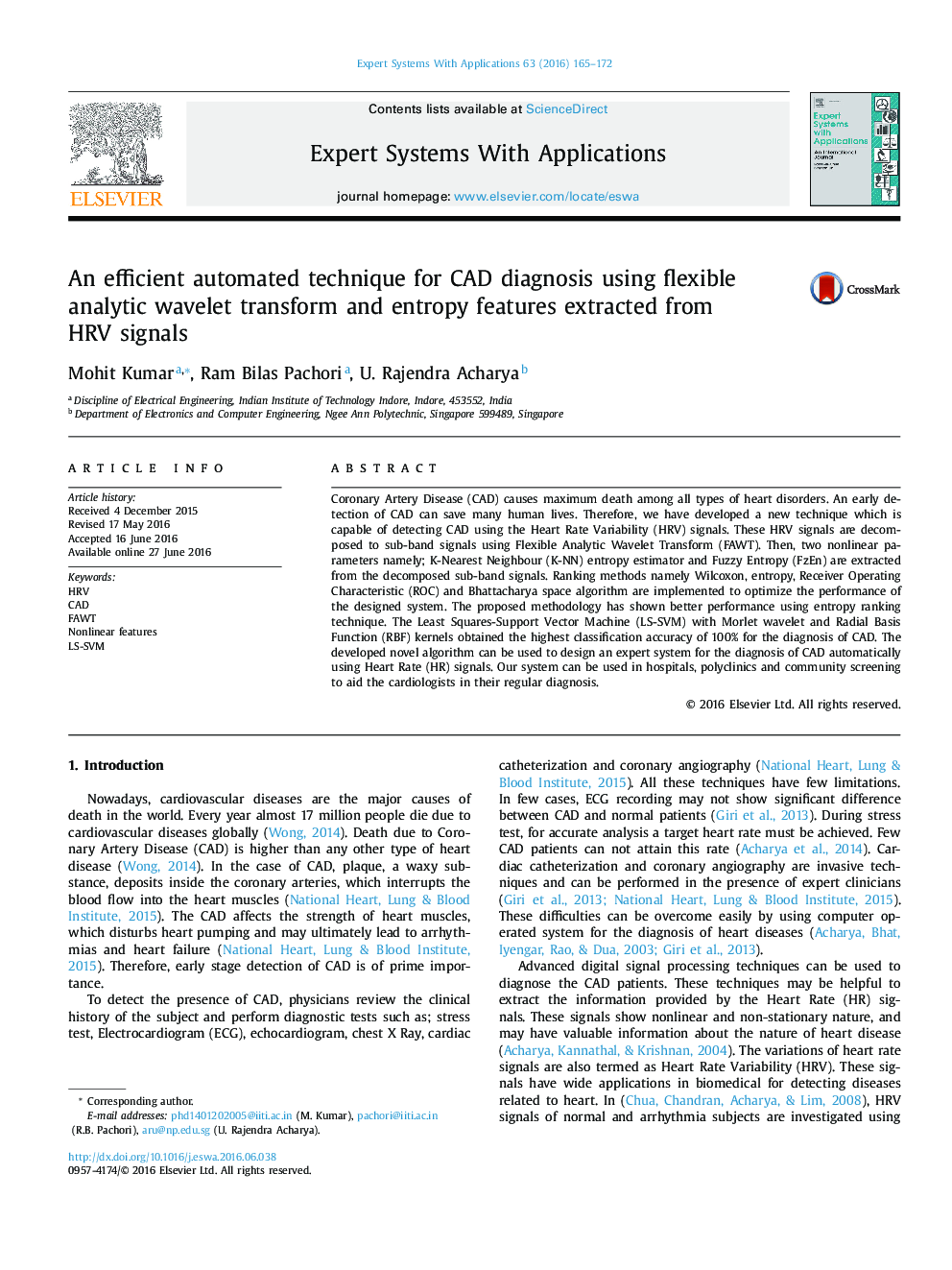| کد مقاله | کد نشریه | سال انتشار | مقاله انگلیسی | نسخه تمام متن |
|---|---|---|---|---|
| 382983 | 660799 | 2016 | 8 صفحه PDF | دانلود رایگان |
• Classification of normal and CAD subjects is proposed using HRV signals.
• FAWT is used to decompose the HRV signal.
• K-NN entropy estimator and fuzzy entropy are used for feature extraction.
• Obtained classification accuracy of 100%.
Coronary Artery Disease (CAD) causes maximum death among all types of heart disorders. An early detection of CAD can save many human lives. Therefore, we have developed a new technique which is capable of detecting CAD using the Heart Rate Variability (HRV) signals. These HRV signals are decomposed to sub-band signals using Flexible Analytic Wavelet Transform (FAWT). Then, two nonlinear parameters namely; K-Nearest Neighbour (K-NN) entropy estimator and Fuzzy Entropy (FzEn) are extracted from the decomposed sub-band signals. Ranking methods namely Wilcoxon, entropy, Receiver Operating Characteristic (ROC) and Bhattacharya space algorithm are implemented to optimize the performance of the designed system. The proposed methodology has shown better performance using entropy ranking technique. The Least Squares-Support Vector Machine (LS-SVM) with Morlet wavelet and Radial Basis Function (RBF) kernels obtained the highest classification accuracy of 100% for the diagnosis of CAD. The developed novel algorithm can be used to design an expert system for the diagnosis of CAD automatically using Heart Rate (HR) signals. Our system can be used in hospitals, polyclinics and community screening to aid the cardiologists in their regular diagnosis.
Journal: Expert Systems with Applications - Volume 63, 30 November 2016, Pages 165–172
